Inspired by the American innovators Sullivan and Wright, the prominent Dutch architect Hendrik Petrus Berlage was an influential European Early-Modern pioneer.

Image source: https://en.wikipedia.org/wiki/Hendrik_Petrus_Berlage#/media/File:Hendrik_Petrus_Berlage_1.jpg
About His Life
Hendrik Petrus Berlage was born on February 21, 1856, in Amsterdam. Berlage studied architecture in Zürich, Switzerland. After a European tour, he started his business in Amsterdam in 1889. Early on, he was involved in urban planning for residential areas in many Dutch cities. During his visit to the United States in 1911, Berlage studied the construction of American architects Louis Sullivan and Frank Lloyd Wright. Then, he died on 12 August 1934 in The Hague.
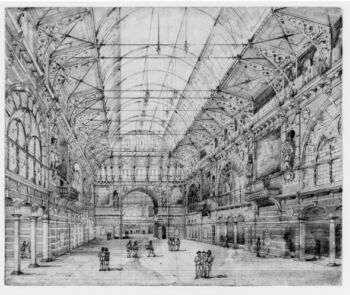
Image source: https://upload.wikimedia.org
His Major Works
- Amsterdam Stock Exchange or Beurs van Berlage (1897–1903)
- Algemeenen Nederlandschen Diamantbewerkersbond or Diamond Workers’ Union building in Amsterdam, and it was opened in 1900. In addition, Italian people’s palaces inspired Berlage’s design.
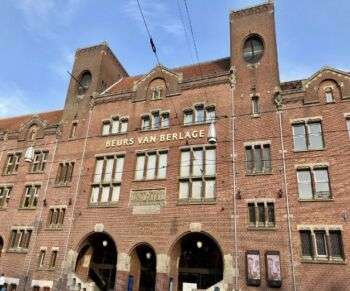
Image source: https://search.creativecommons.org/photos/6881b6ae-6604-445a-a313-ccdda5bab343
- Villa in Groningen (1894)
- Office building in The Hague (1895)
- Villa Henny in The Hague (1898)
- Plan for Amsterdam South (1901)
- Villa Berlage in The Hague (1914)
- St. Hubertus hunting lodge in Otterlo (1914-1920) today it is a part of Museo Kröller-Müller
- Municipal Museum of The Hague (1919-1934)
- Church in The Hague (1926)
- Gemeentemuseum Den Haag (1934) Built in The Hague, it is in the final phase of the architect’s stylistic development.
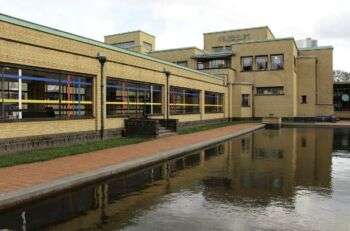
Image source: https://search.creativecommons.org/photos/19de3089-4772-4674-b65e-3b491d0a399c by corno.fulgur75
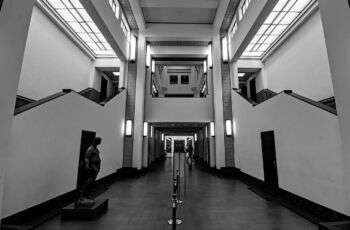
Image source: https://search.creativecommons.org/photos/74ce2063-310d-495b-a17c-830708a24dc6 by LeonardoDaQuirm
Amsterdam Stock Exchange
The Amsterdam Stock Exchange or Beurs van Berlage (1897–1903) is Berlage’s most celebrated building, which revealed his respect for the expressive power of constructive arched masonry. The robustness of the details and his love for masonry and clear expressive functions (such as the kneelers from which the low-arched arches in the atrium spring, and the junctions between the supporting structure and metal trusses) made him a precursor of the Amsterdam School. Additionally, his writings earned him the respect of aspiring young members of the avant-garde.
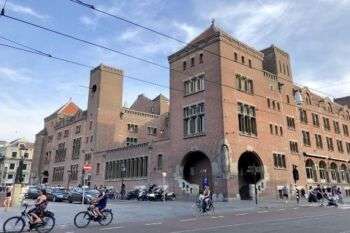
Image source: https://search.creativecommons.org/photos/bc50cc2c-b16b-44f8-a5a0-d8ce9792c368
Features of His Style
Berlage gained inspiration from the combination of Henry Hobson Richardson’s neo-Romanesque brick architecture and the iron structures used in the brick of the Castle of the Three Geckos in Domenech y Montaner. Also, he used the ideas of Viollet-le-Duc in his project for the Amsterdam Stock Exchange. Load-bearing bare brick walls and the idea of the primacy of space have become the guiding principles of Hollandse Zakelijkheid. After 1911, Berlage was particularly influenced by American technology and design and found particular resonance with the organic architecture of Frank Lloyd Wright. Further, he is a mediator between traditionalists and modernists.
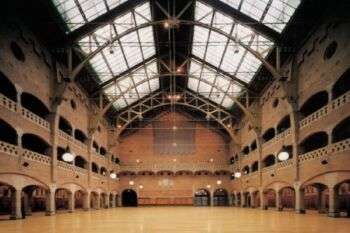
Image source: https://architectureartweb.wordpress.com
Info sources:
http://www.charlotte-salomon.nl
